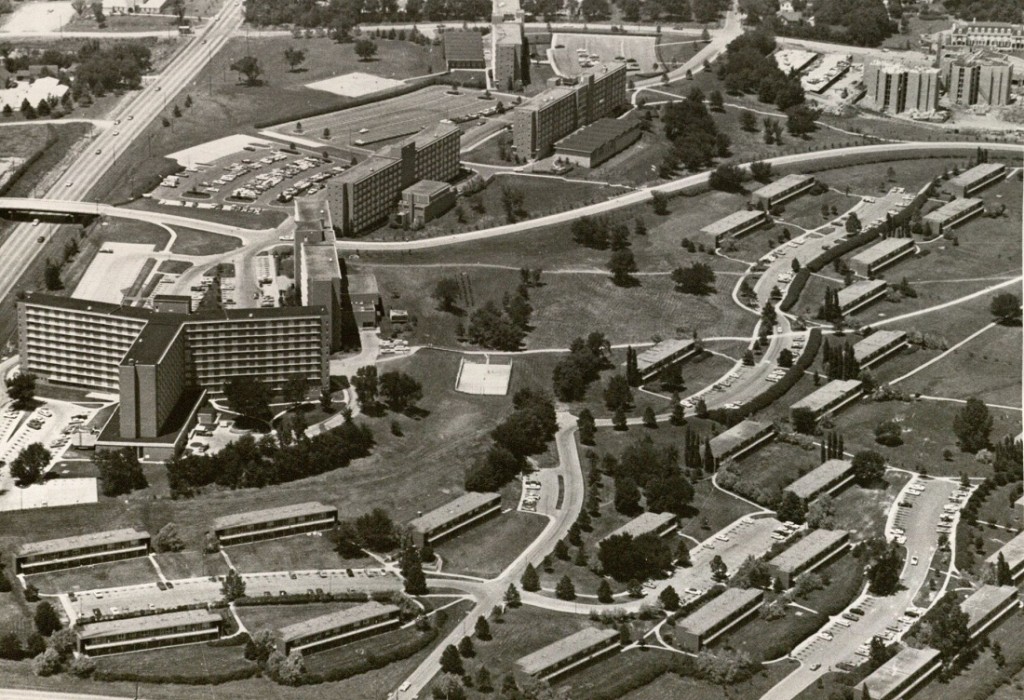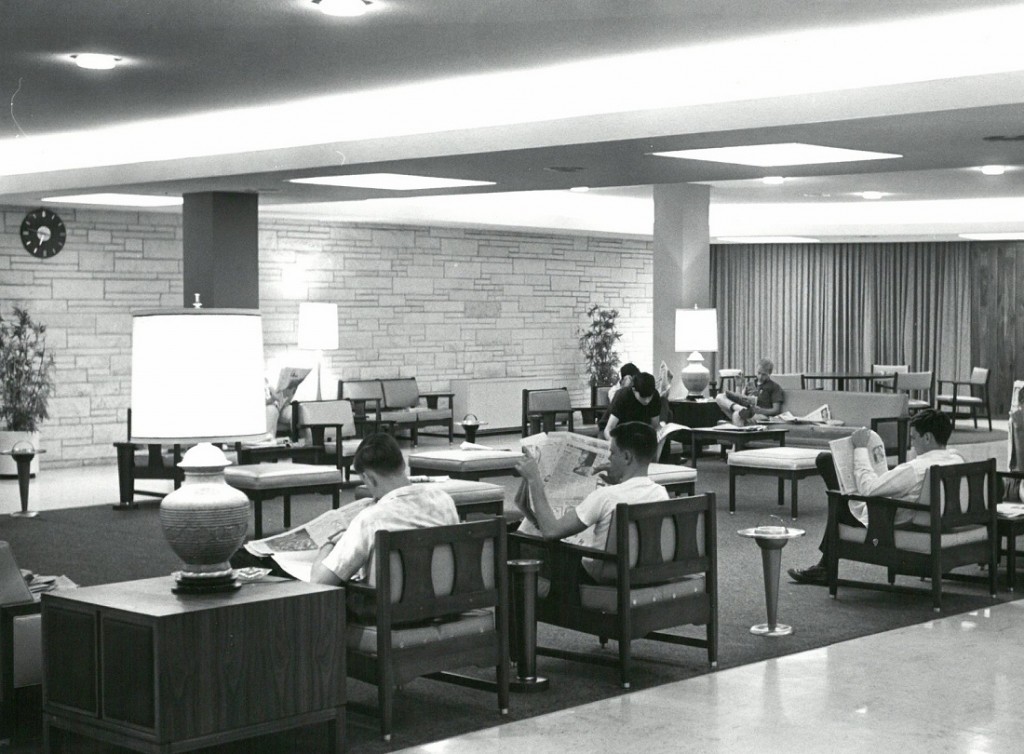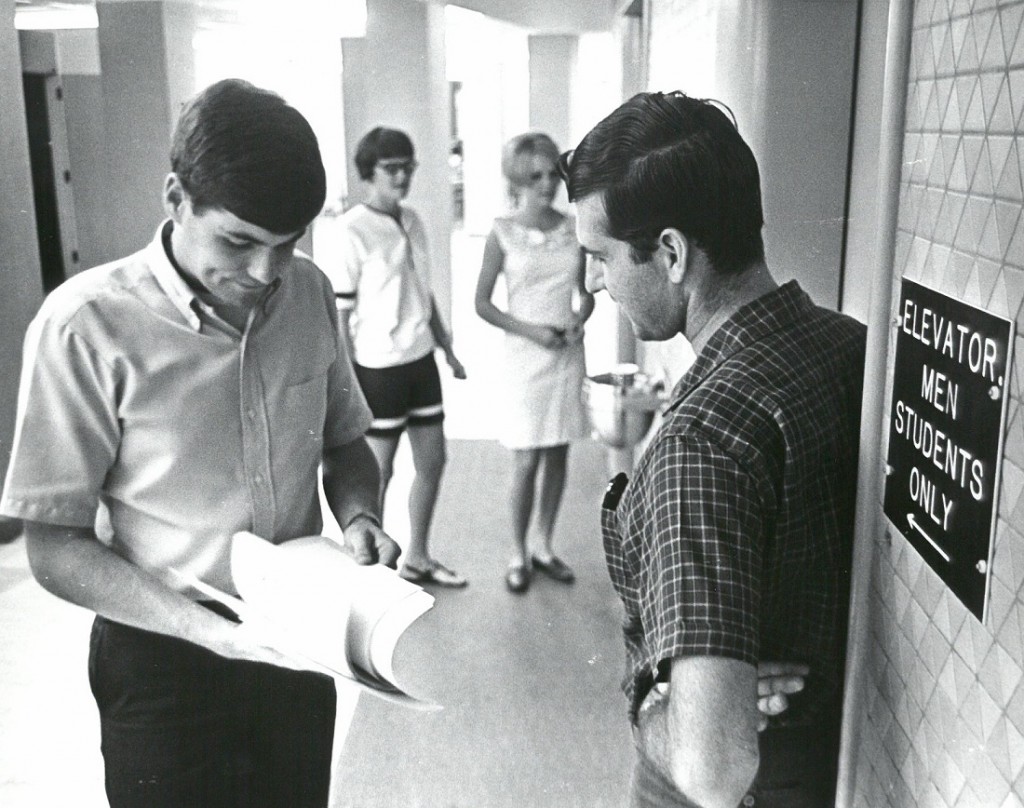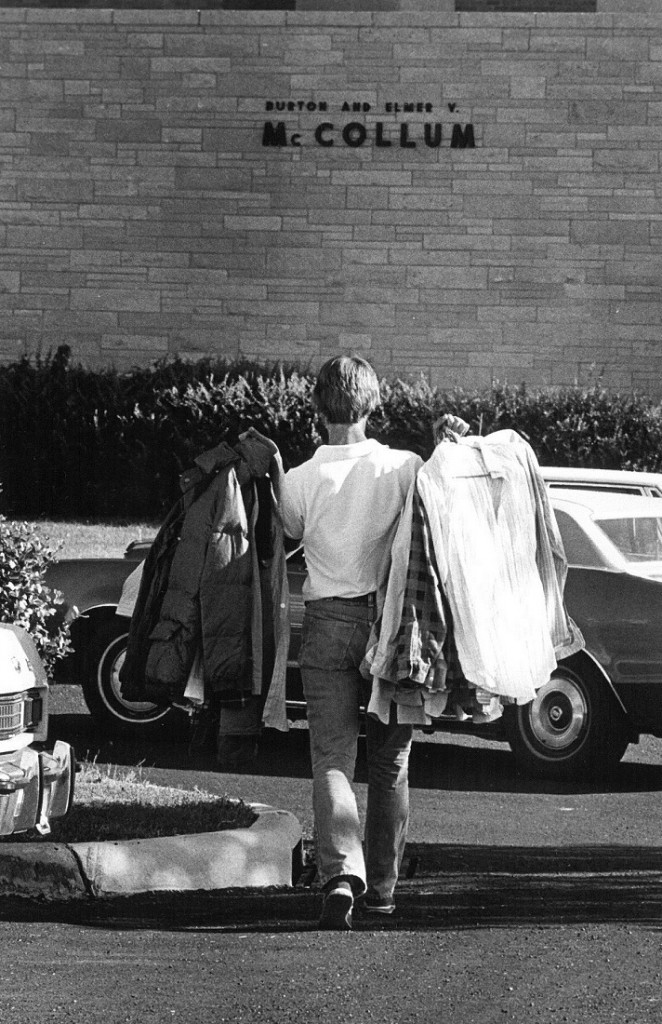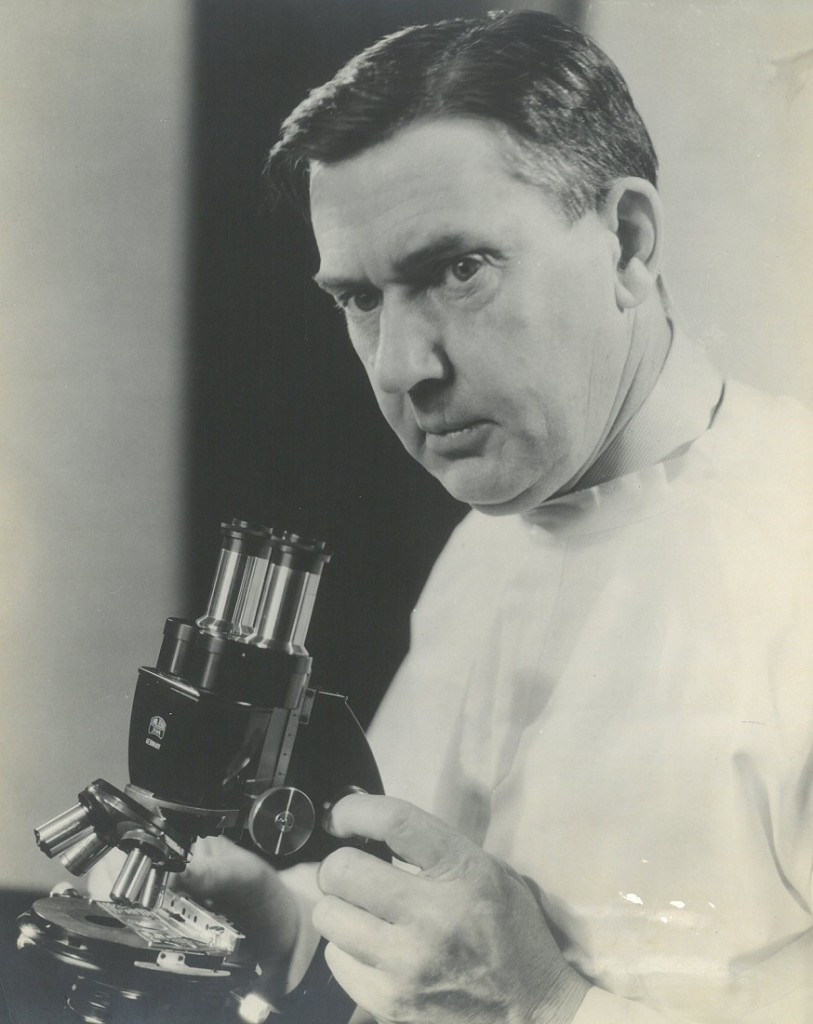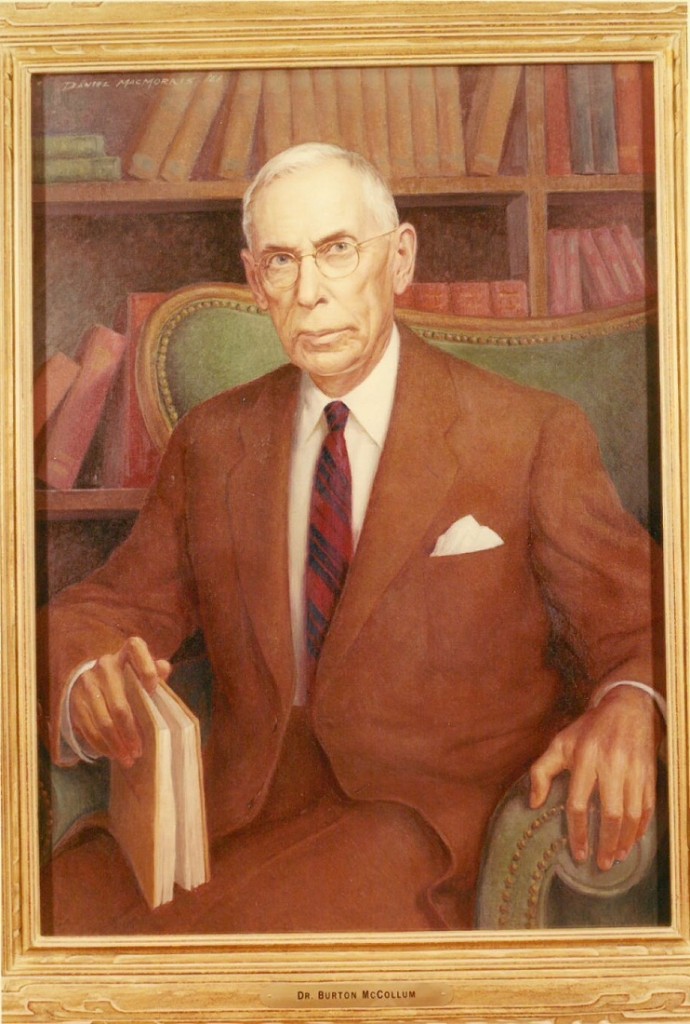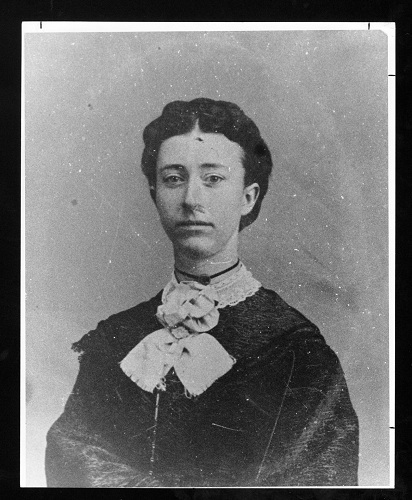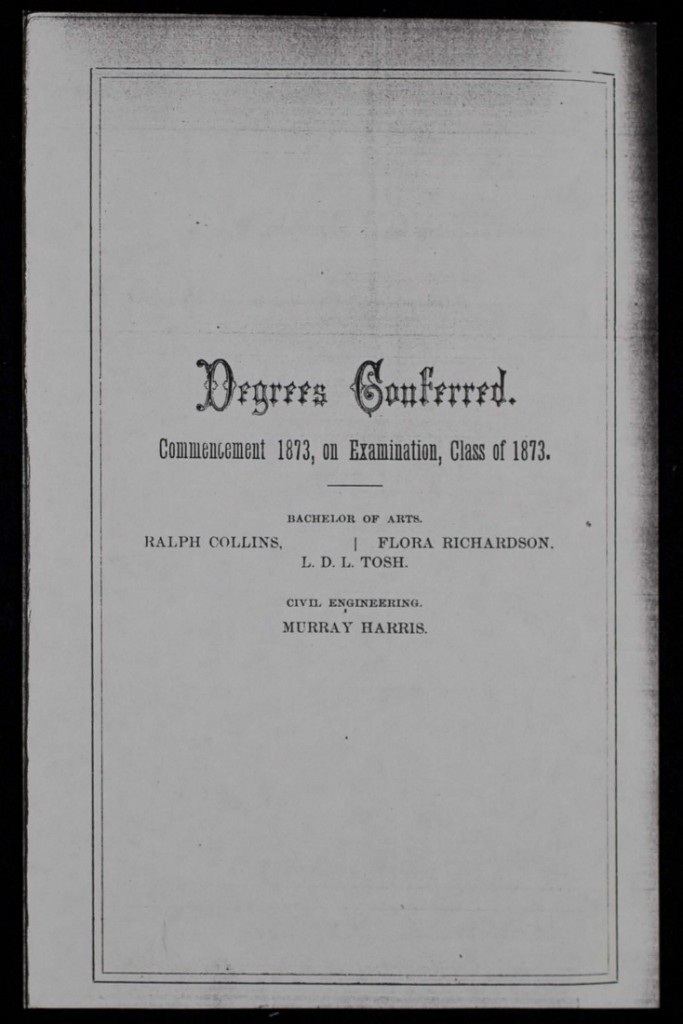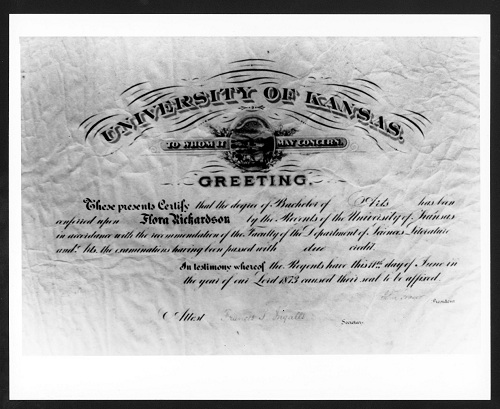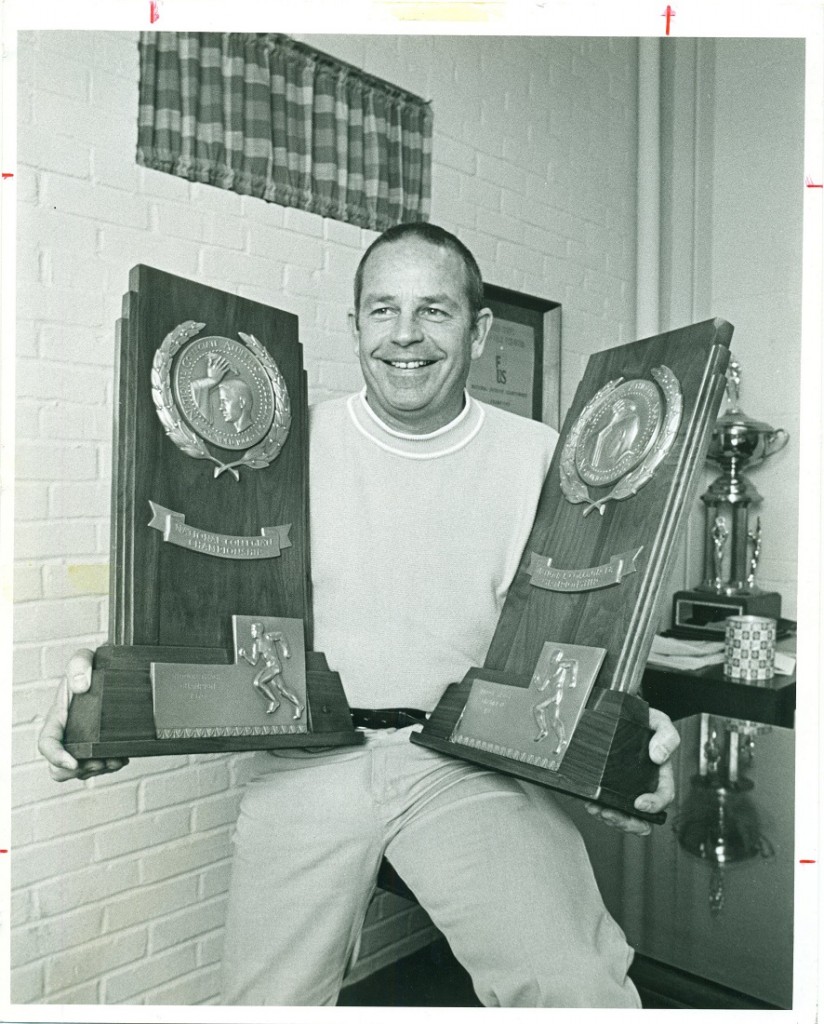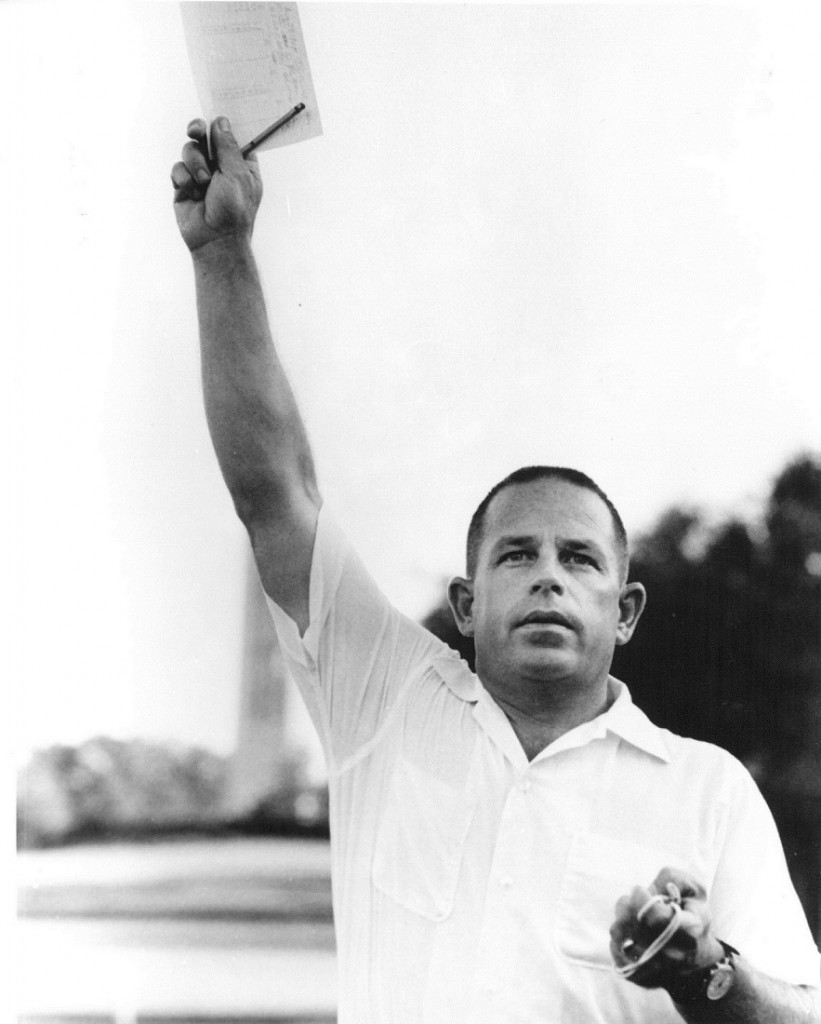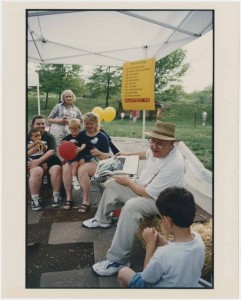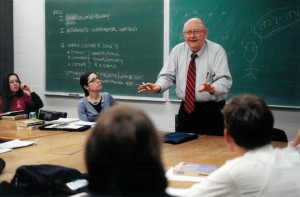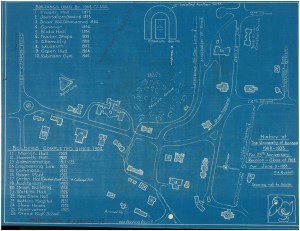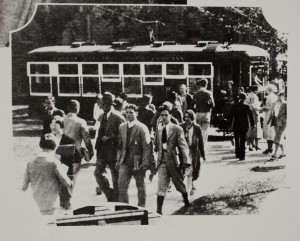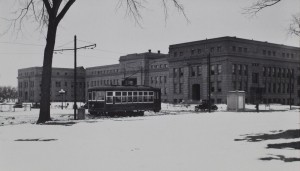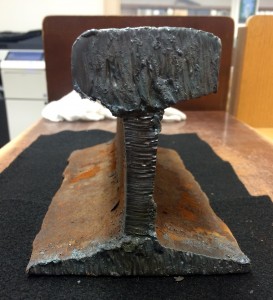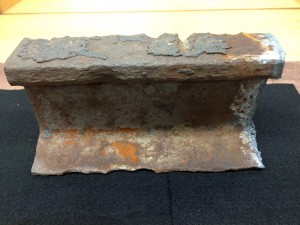Throwback Thursday: McCollum Hall Edition
November 19th, 2015Each week we’ll be posting a photograph from University Archives that shows a scene from KU’s past. We’ve also scanned more than 11,400 images from KU’s University Archives and made them available online; be sure to check them out!
Construction nears completion on McCollum Hall, 1965. University Archives Photos.
Call Number: RG 0/22/45 1965: University General: Buildings: McCollum Hall (Photos).
Click image to enlarge.
As part of the goal to transform undergraduate education on the KU campus, two new residence halls opened on Daisy Hill in 2015. To make way for the new halls and a parking lot, McCollum Hall will be razed next Wednesday, November 25th. This selection of photographs highlights the fifty-year history of the building and those that lived there.
Aerial view of Daisy Hill and Iowa Street looking north (top) and southeast (bottom), 1968.
McCollum Hall is the t-shaped building. Lawrence Journal-World Photo Collection,
University Archives Photos. Call Number: RG LJW 0/24/1 Daisy Hill 1968:
University General: Campus: Areas and Objects: Daisy Hill (Photos).
Click images to enlarge.
Opened in the spring semester of 1965, the dormitory was planned as the fifth and last along Iowa between 15th and 19th streets in the area known as Daisy Hill. The hall was originally built as an all-male dorm to house 976 students. It has since become a co-ed dorm, dominating the Daisy Hill skyline. Thousands of students have called this hall home while at KU.
McCollum Hall residents read newspapers in the main lounge, 1965.
University Archives Photos. Call Number: RG 56/15 1965: Housing:
McCollum Hall (Photos). Click image to enlarge.
Students in McCollum Hall, 1967. University Archives Photos.
Call Number: RG 56/15 1967: Housing: McCollum Hall (Photos).
Click image to enlarge.
A student carries clothes into McCollum Hall, 1978/1979.
University Archives Photos. Call Number: RG 56/15 1978/1979:
Housing: McCollum Hall (Photos). Click image to enlarge.
Students in their dorm room at McCollum Hall, 1993.
University Archives Photos. Call Number: RG 56/15 1993:
Housing: McCollum Hall (Photos). Click image to enlarge.
McCollum Hall was named after two noteworthy Kansas brothers, Elmer and Burton McCollum, who are among the University’s most distinguished graduates and the nation’s men of science. Elmer (1879-1967) discovered vitamins A, B, and D while Burton (1880-1964) developed many of the processes for finding underground oil with sound waves. The two brothers worked their way from impoverished youths on their family farm to remarkably successful and parallel careers, graduating together from KU in 1903. They never forgot their early struggles to earn an education. Burton designated that half his estate be used to aid deserving students and the University. The generosity, tenacity, and brilliance of the McCollum brothers made their name a natural one for a campus building.
Elmer McCollum, undated photograph. University Archives Photos.
Call Number: P/McCollum, Elmer (Photos). Click image to enlarge.
Portrait of Burton McCollum by Kansas City artist
Daniel MacMorris. The painting, along with one of his brother Elmer,
previously hung in the lobby of McCollum Hall. University Archives Photos.
Call Number: P/McCollum, Burton (Photos).
Click image to enlarge.
JoJo Palko
KU 150 Research Archivist
University Archives


